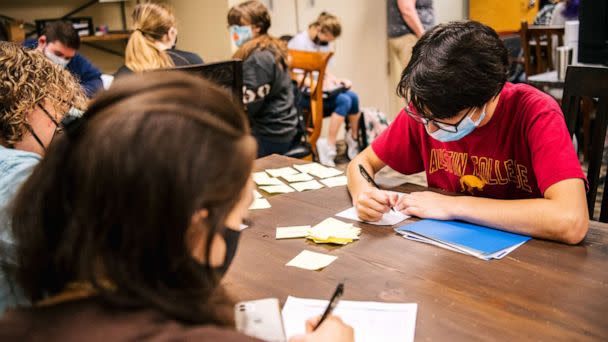CDC updates COVID-19 guidelines: What it means for kids and school
As millions of students across the country return to school over the next several weeks, they will be doing so under new guidance when it comes to COVID-19.
The Centers for Disease Control and Prevention (CDC) on Thursday released new guidelines that impact what people can and cannot do after being exposed to COVID-19.
"We're in a stronger place today as a nation, with more tools -- like vaccination, boosters, and treatments -- to protect ourselves, and our communities, from severe illness from COVID-19," the CDC's Dr. Greta Massetti, one of the authors of the updated guidance, said in a statement." This guidance acknowledges that the pandemic is not over, but also helps us move to a point where COVID-19 no longer severely disrupts our daily lives."
COVID-19 vaccinations for kids as young as 6 months old have been available since June and continue to be recommended by the CDC.
Here are five things for parents to know about the new guidelines and how they impact their kids.
1. Test-to-stay is no longer recommended in schools
Throughout the pandemic, test-to-stay had been used by schools to allow students who were close contacts of a person with COVID to continue to attend school in-person as long as they remained asymptomatic and tested negative.
Due to updated guidelines that relax quarantining, test-to-stay is no longer needed, according to Massetti.
"Because we're no longer recommending quarantine, we're no longer including a section on test-to-stay because the practice of handling exposures would involve masking rather than a quarantine, and test-to-stay was an alternative to quarantine," she said.
2. Unvaccinated people no longer have to quarantine
If your child is not yet vaccinated, they no longer have to quarantine if they are exposed to COVID-19, according to the CDC.
Instead, any child who has been exposed to COVID-19 but is asymptomatic should wear a face mask for 10 days, including at school, and get tested five days after they were exposed.

The CDC had already advised that people who are vaccinated do not need to stay home if they've had an exposure, but can mask instead.
3. Isolation is still recommended for people with COVID
People who test positive for COVID-19 should isolate for at least five days, according to the CDC, noting that applies to people who are unvaccinated as well as vaccinated.
If after day five any fever is gone and symptoms are improving, the isolation period can end, but masking is still recommended for another five days, according to the CDC.
4. People with COVID need 2 negative tests within 48 hours
For people who have COVID-19 and are isolating, the CDC is now recommending two negative tests 48 hours apart before going out in public again without a mask, or after day 10.
MORE: CDC no longer requires unvaccinated to quarantine after being exposed to COVID
The first test should be one on day six of isolation if they're fever-free for 24 hours, followed by a second rapid test 48 hours later, according to the CDC.
If both tests are negative, people can leave their homes and not use a mask around others.
5. Social distancing is less of a priority, but kids may still need to wear a mask in school
One of the hardest guidelines for kids especially to follow during the pandemic has been social distancing, or the guidance to stay six-feet apart to help prevent the spread of COVID.
Now the CDC says it is deemphasizing six feet of social distancing.
MORE: COVID-19 vaccines and kids: What parents should know
"Physical distance is just one component of how to protect yourself and others," the guidance reads. "It is important to consider the risk in a particular setting, including local COVID-19 Community Levels and the important role of ventilation, when assessing the need to maintain physical distance."
Recommendations to mask now depend on the community level risk of COVID-19, but there are exceptions for kids at risk for severe illness like those who are immunocompromised. The same masking guidance for ending isolation and no longer masking in public after testing positive for COVID-19 still applies in school-settings.
"Schools and ECE programs should consider flexible, non-punitive policies and practices to support individuals who choose to wear masks regardless of the COVID-19 Community Level," the guidance says.
ABC News' Cheyenne Haslett, Jade Cobern and Mary Kekatos contributed to this report.
CDC updates COVID-19 guidelines: What it means for kids and school originally appeared on goodmorningamerica.com
